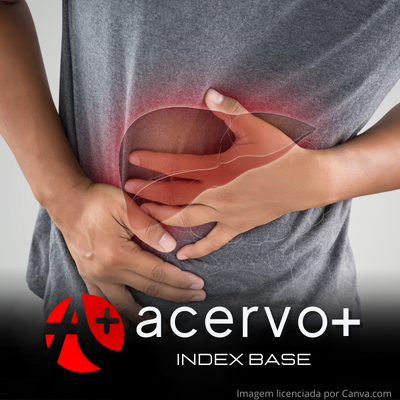Injúria hepática associada a drogas antituberculose e a importância das drogas hepatoprotetoras
##plugins.themes.bootstrap3.article.main##
Resumo
Objetivo: Avaliar os efeitos dos principais fármacos utilizados no tratamento de tuberculose, bem como sua relação com o desenvolvimento de injúria hepática em pacientes que realizam uso combinado desses medicamentos, além de avaliar a eficácia de estratégias quimiopreventivas. Métodos: Trata-se de uma revisão integrativa que analisou produções científica das bases de dados da National Library of Medicine (PubMed) e Biblioteca Virtual de Saúde (BVS), foram aplicados critérios de inclusão e exclusão para a análise dos resultados e discussão. Resultados: Drogas antituberculose, principalmente Rifampicina, Isoniazida e Pirazinamida, possuem potencial hepatotóxico importante que apresentam caráter laboratorial e clínico prejudiciais e portanto, aumentam a taxa de desistência do tratamento da tuberculose, no entanto, drogas hepatoprotetoras já se mostram relevantes para serem utilizadas em terapia complementar às drogas antituberculosas pois auxiliam na redução de sintomas e complicações, reduzindo taxa de desistência e melhorando qualidade de vida dos pacientes. Considerações finais: É clara a necessidade de adicionar medicamentos ao esquema RHZE que são hepatoprotetores, principalmente biciclol, silimarina e a N-acetilcisteína.
##plugins.themes.bootstrap3.article.details##
Copyright © | Todos os direitos reservados.
A revista detém os direitos autorais exclusivos de publicação deste artigo nos termos da lei 9610/98.
Reprodução parcial
É livre o uso de partes do texto, figuras e questionário do artigo, sendo obrigatória a citação dos autores e revista.
Reprodução total
É expressamente proibida, devendo ser autorizada pela revista.
Referências
2. BLIVEN-SIZEMORE EE, et al. Three Months of Weekly Rifapentine plus Isoniazid Is Less Hepatotoxic than Nine Months of Daily Isoniazid for LTBI. The International Journal of Tuberculosis and Lung Disease, 2015; 19(9): 1039-1044.
3. CHEN G, et al. Association of UGT2B7 Polymorphisms with Risk of Induced Liver Injury by Anti-Tuberculosis Drugs in Chinese Han. International Journal of Immunopathology and Pharmacology, 2017; 30(4): 434-438.
4. CHEN R, et al. Associação de Polimorfismos em Genes Transportadores de Drogas (SLCO1B1 e SLC10A1) e Hepatotoxicidade Induzida por Drogas Anti-Tuberculose em uma Coorte Chinesa. Tuberculose, 2015; 95(1): 68-74.
5. CHEN Y, et al. Pharmacoeconomics of Three Therapeutic Schemes for Anti-Tuberculosis Therapy Induced Liver Injury in China. Open Medicine, 2018; 13(1): 53-63.
6. CHU NH, et al. Role of Bicyclol in Preventing Drug-Induced Liver Injury in Tuberculosis Patients with Liver Disease. The International Journal of Tuberculosis and Lung Disease, 2015; 19(4): 475-480.
7. GRAY EL, GOLDBERG HF. Testes de função hepática anormais na linha de base são mais importantes que a idade no desenvolvimento de hepatotoxicidade induzida por isoniazida para pacientes que recebem terapia preventiva para infecção latente por tuberculose: isoniazida para tuberculose latente. Revista de Medicina Interna, 2016; 46(3): 281-287.
8. HASANAIN AFA, et al. Cholecalciferol for Prophylaxis against Antituberculosis Therapy-Induced Liver Disorders among Naïve Patients with Pulmonary Tuberculosis: A Randomized, Comparative Study. International Journal of Mycobacteriology, 2017; 6(2): 149-150.
9. HATAMKHANI S, et al. Carnitina para a Prevenção da Hepatotoxicidade Induzida por Medicamentos Antituberculose: Um Ensaio Clínico Randomizado: Antituberculose e Hepatotoxicidade. Jornal de Gastroenterologia e Hepatologia, 2014; 29(5): 997-1004.
10. HORITA N, et al. Decreased Activities of Daily Living Is a Strong Risk Factor for Liver Injury by Anti-Tuberculosis Drugs: Poor ADL Predicts TB Drugs Liver Injury. Respirology, 2013; 18(3): 474-479.
11. LUANGCHOSIRI C, et al. A Double-Blinded Randomized Controlled Trial of Silymarin for the Prevention of Antituberculosis Drug-Induced Liver Injury. BMC Complementary and Alternative Medicine, 2015; 15(1): 334-335.
12. MACIEL ELN, et al. Tuberculose e coronavírus: o que sabemos?. Epidemiologia e Serviços de Saúde, 2020; 29(2): e2020128-e2020129.
13. MADDAHI SZ, et al. A eficácia do xarope de jujuba na prevenção da hepatotoxicidade induzida por drogas em pacientes com tuberculose pulmonar: um ensaio clínico piloto randomizado duplo-cego controlado por placebo. Pesquisa em Farmacologia e Perspectivas, 2022; 10(1): e00902-e00908.
14. MOOSA MS, et al. A Randomized Controlled Trial of Intravenous N-Acetylcysteine in the Management of Anti-Tuberculosis Drug–Induced Liver Injury. Clinical Infectious Diseases, 2021; 73(9): e3377-e3383.
15. NAIDOO K, et al. High Rates of Drug-Induced Liver Injury in People Living With HIV Coinfected With Tuberculosis (TB) Irrespective of Antiretroviral Therapy Timing During Antituberculosis Treatment: Results From the Starting Antiretroviral Therapy at Three Points in TB Trial. Clinical Infectious Diseases, 2020; 70(12): 2675-2682.
16. NGONGONDO M, et al. Hepatotoxicity During Isoniazid Preventive Therapy and Antiretroviral Therapy in People Living With HIV With Severe Immunosuppression: A Secondary Analysis of a Multi-Country Open-Label Randomized Controlled Clinical Trial. JAIDS Journal of Acquired Immune Deficiency Syndromes, 2018; 78(1): 54-61.
17. SINGH AK, et al. Appropriate Chemopreventive Strategy for Anti-Tubercular Therapy Related Liver Injury Is Unsettled: Results from a Systematic Review and Network Meta-Analysis. Expert Review of Clinical Pharmacology, 2020; 13(11): 1253-1262.
18. SOTGIU G, et al. The ERS-endorsed official ATS/CDC/IDSA clinical practice guidelines on treatment of drug-susceptible tuberculosis. European Respiratory Journal, 2016; 48(4): 963-971.
19. TAO L, et al. Prophylactic Therapy of Silymarin (Milk Thistle) on Antituberculosis Drug-Induced Liver Injury: A Meta-Analysis of Randomized Controlled Trials. Canadian Journal of Gastroenterology and Hepatology, 2019; 2019: 1-11.
20. TEDLA Z, et al. Hepatite Associada à Isoniazida em Adultos Infectados com HIV Recebendo 36 Meses de Profilaxia com Isoniazida no Botswana. Peito, 2015; 147(5): 1376-1384.
21. WU S, et al. Polimorfismos genéticos da glutationa S-transferase P1 (GSTP1) e a incidência de hepatotoxicidade induzida por drogas anti-tuberculose. PLoS One, 2016; 11(6): e0157478-e0157489.
22. XIONG KE, et al. Lactobacillus Casei Alleviated the Abnormal Increase of Cholestasis‐Related Liver Indices During Tuberculosis Treatment: A Post Hoc Analysis of Randomized Controlled Trial. Molecular Nutrition & Food Research, 2021; 65(16): 2100108-2100109.
23. ZHANG S, et al. Preventive Use of a Hepatoprotectant against Anti‐tuberculosis Drug‐induced Liver Injury: A Randomized Controlled Trial. Journal of Gastroenterology and Hepatology, 2016; 31(2): 409-416.
24. ZUBERI BF, et al. Comparison of British Thoracic Society and American Thoracic Society Reintroduction Guidelines for Anti-Tuberculous Therapy Induced Liver Injury. The Journal of the Pakistan Medical Association, 2014; 64(8): 896-899.

